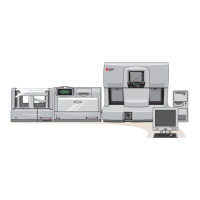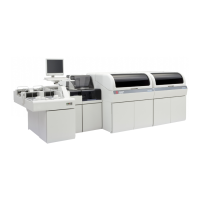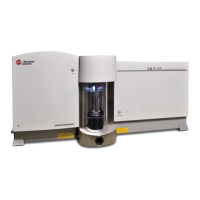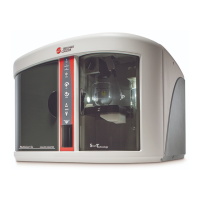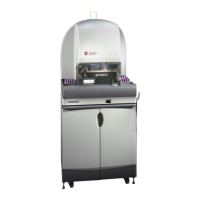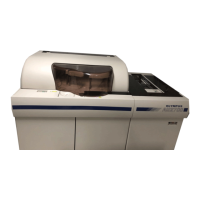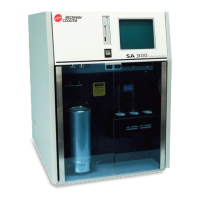
Do you have a question about the Beckman Coulter SA 3100 Series and is the answer not in the manual?
| Power Requirements | 100-240 VAC, 50/60 Hz |
|---|---|
| Adsorptive Gas | Nitrogen |
| Surface Area Range | 0.01 m²/g to no upper limit |
| Number of analysis ports | 1 |
| Measurement Principle | Volumetric method |
| Measurement Time | Varies depending on the sample and analysis conditions |
| Light Source | Not applicable |
| Operating Humidity | 20% to 80% non-condensing |
| Category | Surface Area and Pore Size Analyzer |
Manual overview, operating, and maintenance instructions for the SA 3100 analyzer.
Explains conventions for touch-screen interface, messages, and key graphics.
Lists chapters and their primary topics covered in the manual.
Hazards of compressed gases, cryogenic liquids, and general warnings.
Details potential hazards and safety measures when handling liquid nitrogen.
Outlines risks and safety practices for compressed nitrogen and other inert gases.
Introduces the installation process, scheduling, and key considerations.
Lists environmental, electrical, gas, and hardware requirements for installation.
Procedures for unpacking the instrument and basic hardware setup.
Step-by-step guide for installing the vacuum pump, including oil and filter.
Instructions for connecting gas supply, optional regulators, and purging lines.
Installing the saturation tube and powering up the analyzer.
Procedures for flushing gas lines and installing a printer.
Overview of advanced setup options and the analyzer's user interface.
Describes the analyzer's capabilities, system function, and sample analysis process.
Identifies and describes the main physical components of the SA 3100 analyzer.
Explains how to use the touch screen, menus, and various screens.
Covers creating, editing, and deleting analysis profiles for the instrument.
Details optional features like mouse support and configuration kits.
Introduces instrument verification and the steps for sample analysis.
Outlines the six main steps involved in analyzing a sample.
Procedure for accurately weighing the sample tube assembly.
Instructions for adding the prepared sample into the sample tube.
Process for entering sample details and parameters into the analyzer.
Steps for connecting the sample tube and performing outgassing.
Procedure for weighing the sample tube after the outgassing process.
Steps to select a sample and initiate the analysis process.
Steps for removing the dewar and sample tube after analysis completion.
How to view and interpret specific surface area results on the analyzer screen.
Introduces fundamental concepts like adsorption, absorption, and isotherms.
Explains the theoretical basis for adsorption and desorption measurements and calculations.
Details all procedures for operating the SA 3100 analyzer.
Instructions for configuring settings like screen brightness and printer.
Covers creating, editing, deleting, and managing analysis profiles.
Guidance on selecting the appropriate sample mass for accurate analysis.
Information on selecting the correct sample tube type and size.
Covers weighing, adding sample, logging, and outgassing procedures.
Steps for selecting and running sample analyses.
How to print results and access saved data files.
Details advanced configuration settings for the analyzer.
Overview of frequency and general practices for cleaning and maintenance.
Detailed procedure for cleaning and drying sample tubes.
Instructions for maintaining O-rings on ports and fittings.
Procedures for checking vacuum pump oil, cleaning filters, and changing oil mist filters.
Step-by-step guide for replacing gas cylinders.
Specifies operating and storage environmental conditions.
Lists electrical supply voltage, frequency, and power consumption.
Defines the purity and type of gases required for operation.
Details measurement ranges, reproducibility, and resolution.
Specifies performance parameters for the vacuum pump and outgassing system.
Introduction to SA-VIEW software and its installation process.
Describes the main window, menus, toolbars, and icons of the software.
Guide to opening files, viewing data, printing, and managing windows.
Provides general notes on sample preparation and the outgassing process.
Discusses temperature, time, and system comparisons for outgassing.
Compares the effectiveness of different outgassing system types.
